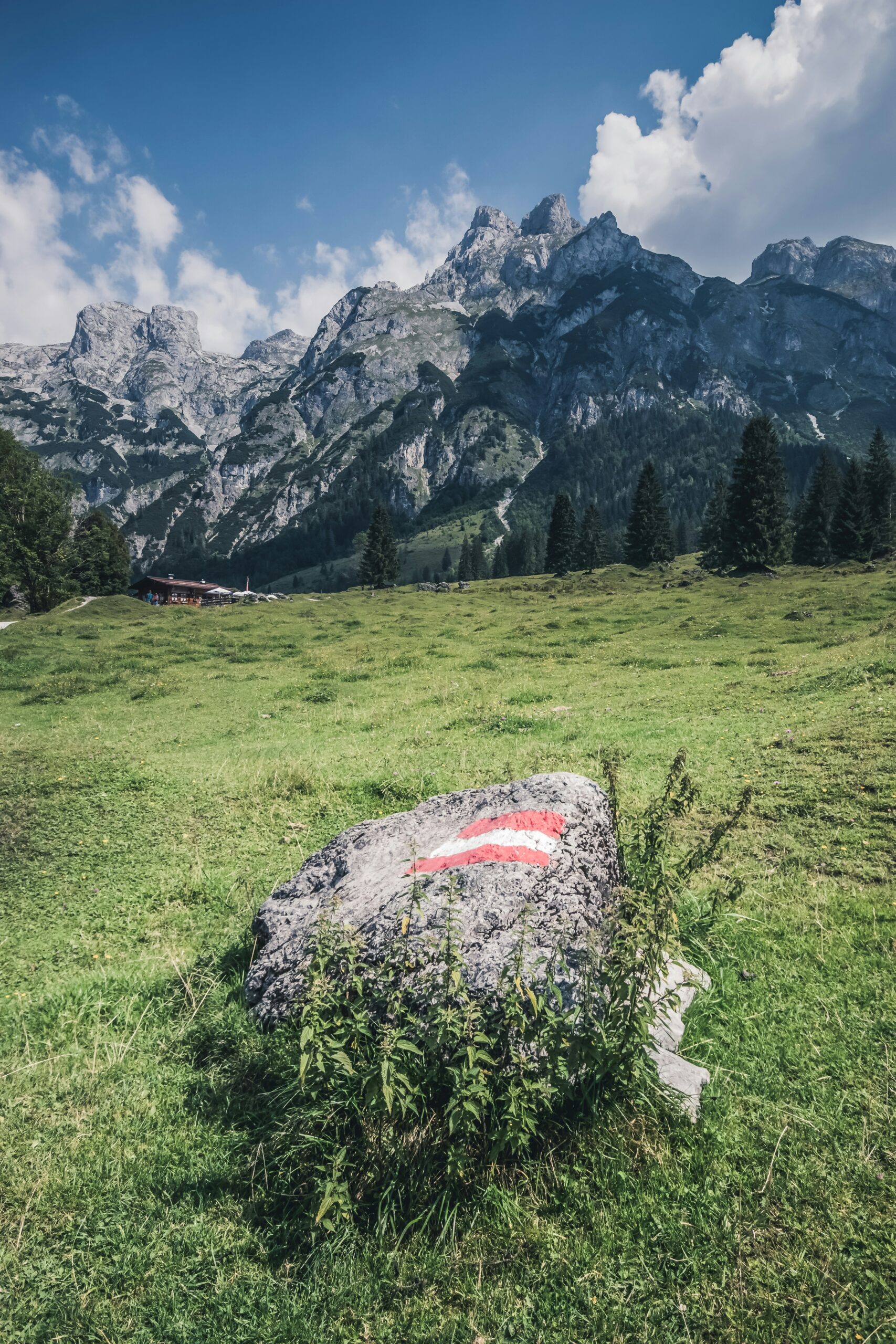Picture this: you're standing on a narrow mountain ridge, breathing in crisp alpine air while gazing across a sea of emerald valleys dotted with traditional wooden chalets. Church bells echo faintly from picture-perfect villages below, and ahead of you stretches a well-marked trail leading to your next mountain refuge, where a warm meal and comfortable bed await. This is hiking in Austria—a country that has mastered the art of mountain hospitality like nowhere else on earth.
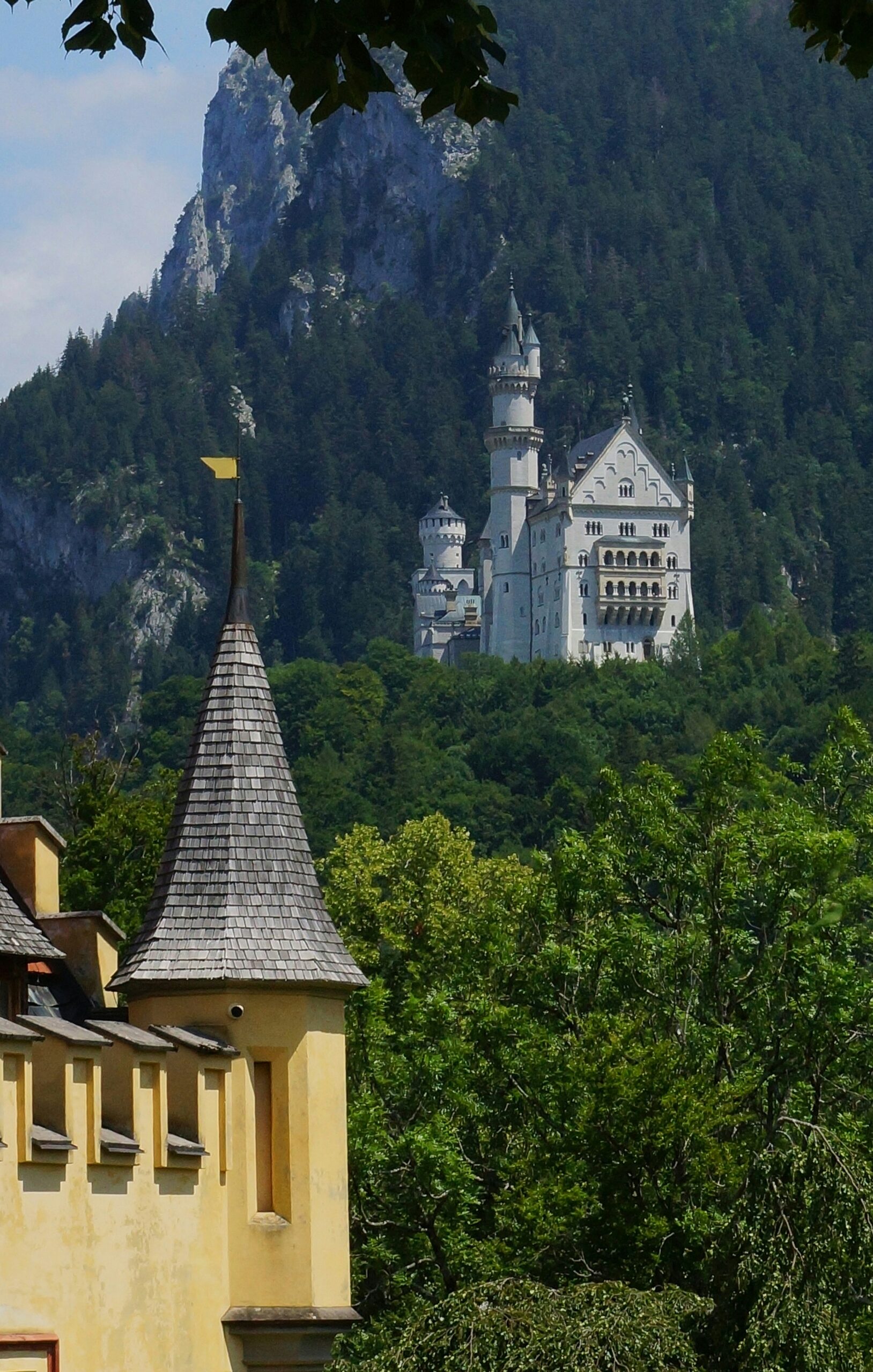
Austria's dramatic mountains with wonderful alpine landscapes offer something truly special for hikers. Unlike the towering giants of neighboring countries, these peaks create an intimate, accessible wilderness where the ingrained Austrian culture of hospitality transforms every trek into a deeply personal adventure. Whether you're dreaming of booking flights to Austria for your first European hiking experience or you're already planning Austria holidays around multi-day mountain adventures, this guide will show you exactly why the Austrian Alps should be at the top of every hiker's bucket list.
When searching for flights to Austria, you'll discover excellent connections through Vienna and Salzburg, making it easier than ever to begin your alpine adventure. The best flights to Austria often include convenient stopovers that allow you to start planning your mountain itinerary before you even land.
Many hikers face the same dilemma when planning a European mountain adventure: how to balance ambitious trekking goals with practical logistics, safety concerns, and budget constraints. Austria solves these challenges brilliantly through its unique combination of accessible peaks, comprehensive hut system, and deep-rooted mountain culture that welcomes visitors like family.
Smart travelers booking flights to Austria often plan extended Austria holidays to fully explore multiple hiking regions. The country's compact size means your Austria holidays can easily combine mountain trekking with cultural exploration, making every trip incredibly rich and diverse. Looking at any detailed map with Austria clearly marked, you'll notice how hiking regions cluster perfectly for multi-area adventures.
This comprehensive guide covers everything you need to transform your Austrian hiking dreams into reality—from understanding why Austria is truly a hiker's paradise to detailed route breakdowns, essential gear recommendations, crucial safety information, and even cultural highlights that will enrich your mountain adventure beyond the trails themselves.
Table of Contents
- Why Austria is a Hiker's Paradise
- Choosing Your Austrian Hiking Adventure: Top Regions & Guides
- Featured Hikes: Detailed Itineraries & Insights
- Essential Gear for Your Austrian Hiking Trip
- Safety & Insurance: What You Need to Know
- Beyond the Trails: Exploring Austria's Alpine Culture & Towns
- Useful Resources for Planning Your Trip
- Frequently Asked Questions
Why Austria is a Hiker's Paradise
Less Glaciation, More Accessible Routes
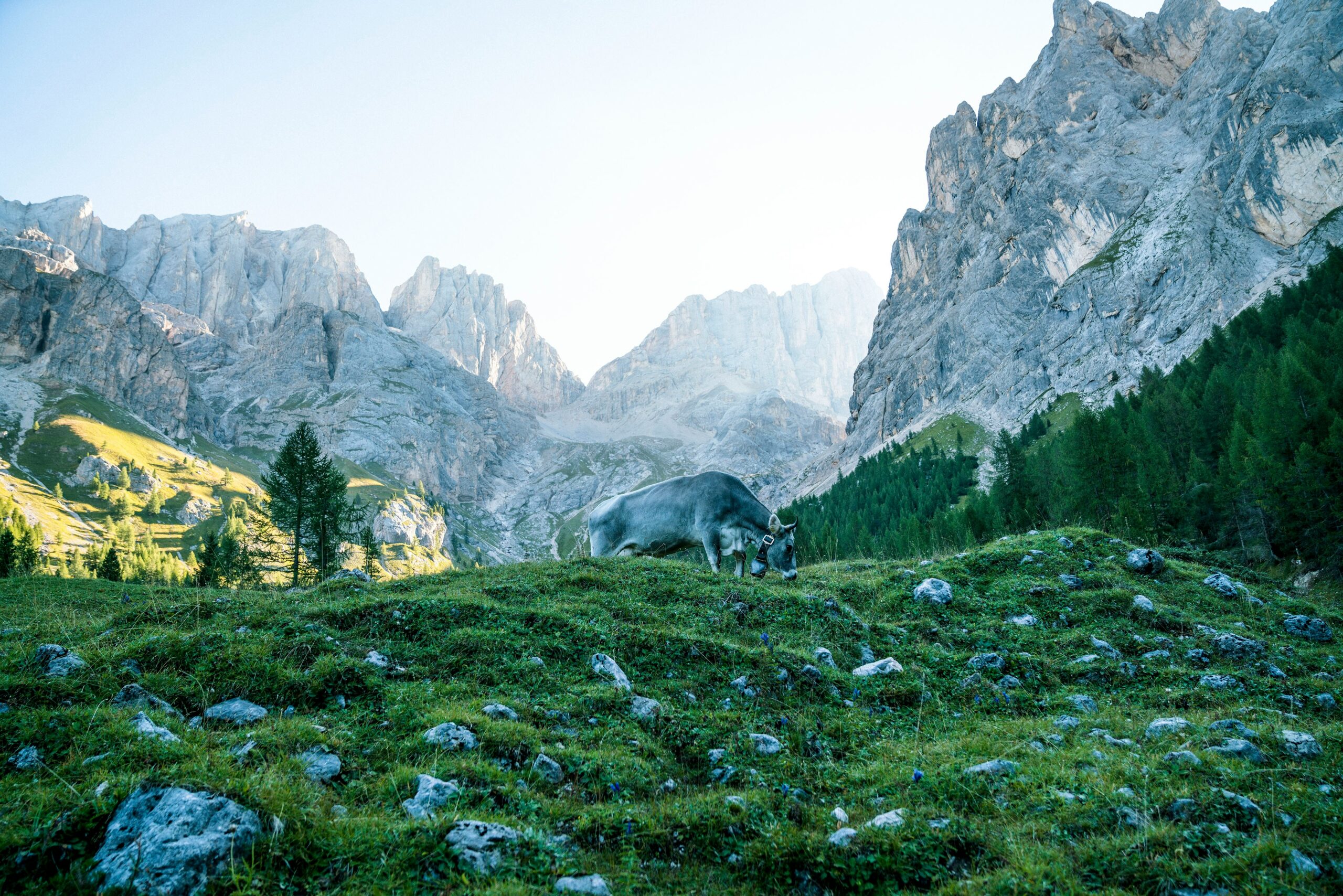
Austria's mountains tell a different story than their Swiss and French neighbors. The mountain tops are lower than the giants of the Swiss and French Alps, typically ranging between 2,500 and 3,500 meters rather than soaring past 4,000 meters. This seemingly modest difference creates a hiking paradise through less extensive glaciation, opening up countless routes for hikers lacking in glacier travel skills.
Where other Alpine countries demand technical mountaineering experience for their most spectacular trails, Austria welcomes you with open arms and well-maintained paths. The landscapes are no less breathtaking—they're simply more accessible, allowing you to focus on soaking in the incredible scenery rather than worrying about crevasse rescue techniques or crampon skills.
The Magic of Mountain Huts
The real secret to Austria's hiking appeal lies in its extensive spider web of trails that crisscross the alps and connect a network of Mountain Huts. These aren't rustic shelters—they're something uniquely Austrian: part hotel, part hostel, and a welcome haven to mountain walkers seeking genuine Alpine hospitality.
Revolutionary Approach: Every mountain hut provides food and sleeping accommodation, freeing you from the burden of carrying large quantities of food, tents, and sleeping bags. This revolutionary approach enables longer walks covering greater distances with just a 35 to 40 litre pack. Imagine trekking for a week through some of Europe's most spectacular mountain scenery while carrying less gear than you'd take on a weekend camping trip!
The atmosphere in these huts is magical. After a long day on the trails, you'll gather in the dining room with fellow hikers from around the world, sharing stories over hearty Austrian cuisine and local beer. The hut wardens—often local families who've run these refuges for generations—create an atmosphere of genuine warmth that transforms strangers into temporary family.
Austrian Hospitality
Austria's ingrained culture of hospitality extends far beyond the mountain huts into the picture postcard villages that serve as gateways to the Alps. Local people take genuine pride in sharing their mountains with visitors, offering insider tips, weather updates, and that particular Austrian warmth that makes every interaction memorable.
This hospitality isn't manufactured for tourists—it's woven into the fabric of Austrian mountain culture. From the baker who starts work at 4 AM to ensure fresh bread for hiking groups, to the bus driver who waits an extra few minutes for hikers rushing to catch the morning transport, you'll experience a level of service that feels more like friendship than commerce.
The Austrian Alpine Club Legacy
Behind all this incredible infrastructure stands the Austrian Alpine Club, a remarkable organization with 320,000 members dedicated to maintaining trails, supporting huts, and preserving mountain traditions. Their work ensures that trails remain well-marked, safe, and authentic to Austrian mountain culture.
The club's influence means you'll find consistent trail marking, reliable route information, and a network of support that spans the entire country. As a hiker, you benefit from over a century of passionate mountain stewardship that has created one of the world's finest hiking infrastructures.
Choosing Your Austrian Hiking Adventure: Top Regions & Guides
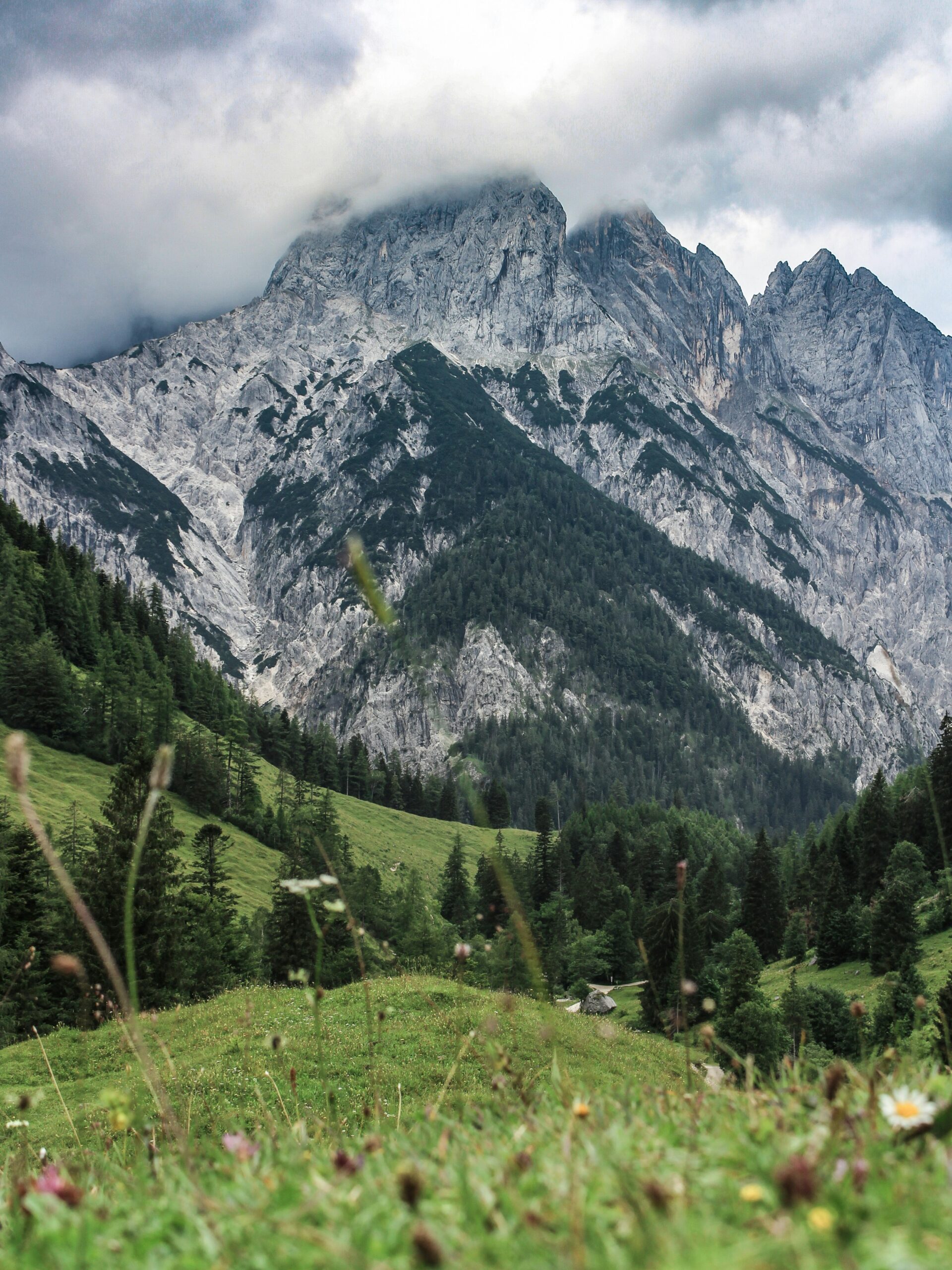
Austria's hiking possibilities stretch from gentle daywalks or 2 to 3 days walks through alpine meadows to challenging longer walks of say 4 to 7 days duration across high mountain passes. The diversity ensures every hiker finds their perfect adventure, regardless of experience level or available time.
Top Regions for Unforgettable Hiking
The country's premier hiking regions each offer distinct personalities and attractions. Silvretta combines glaciated peaks with lush valleys, while Otztal provides more rugged, dramatic landscapes. Stubai attracts those seeking accessibility combined with serious mountain terrain, and Hohe Tauern offers Austria's highest peaks and most diverse wildlife. Zillertal delivers challenging high-altitude routes with incredible hut experiences, and Dachstein combines spectacular limestone formations with convenient access from charming towns.
Each region maintains its own character while offering that signature Austrian combination of stunning scenery, excellent infrastructure, and warm hospitality. Looking at a map with Austria clearly marked, you'll notice how these hiking regions form convenient clusters, making it easy to combine different areas in a single trip. Many hikers find that booking flexible flights to Austria allows them to extend their stays when they discover unexpected gems.
The strategic planning of Austria holidays around these diverse regions means you can experience everything from glacier-fed lakes to traditional villages in one comprehensive adventure. Whether you're studying a detailed map with Austria's topography or browsing online flight deals, the country's central European location makes it incredibly accessible for international visitors.
| Region | Difficulty | Duration | Highlights | Best For |
|---|---|---|---|---|
| Zillertal | Hard | 8-9 days | 3,000m passes, technical terrain | Experienced hikers |
| Silvretta | Medium | 4 days | Glaciated peaks, green valleys | Intermediate hikers |
| Stubai | Medium-Hard | 8-10 days | Accessible via Innsbruck | Good logistics needed |
| Dachstein | Easy-Medium | 2-5 days | Limestone formations, cultural sites | Cultural + hiking combo |
Essential Guidebooks for Planning
Walking in Austria by Kev Reynolds (Cicerone) serves as an excellent introduction to Austrian hiking, focusing primarily on day walks with basic multi-day suggestions. Reynolds brings decades of Alpine experience to descriptions that balance practical information with inspiring narrative, making this guide perfect for first-time visitors or those planning shorter adventures.
Trekking In The Zillertal Alps by Allan Hartley (Cicerone) provides definitive coverage of the famous 8/9 day Zillertal High route along with shorter variations. Hartley's detailed descriptions include everything from water sources to accommodation booking strategies, making this guide indispensable for anyone considering Austria's most challenging popular trek.
Trekking in the Stubai Alps by Allan Hartley (Cicerone) covers the 8 to 10 day Stubai Haute route and its variations, highlighting this region's accessibility near Innsbruck and excellent downhill skiing infrastructure that doubles as hiking support during summer months. The guide excels at explaining how the region's ski resort development actually enhances rather than detracts from the hiking experience.
For broader Alpine context, Walking in the Alps and Trekking in the Alps (both from Cicerone) place Austrian routes within the larger European Alps framework, helping you understand how Austria fits into your broader mountain travel goals.
Featured Hikes: Detailed Itineraries & Insights
The Zillertal High Route
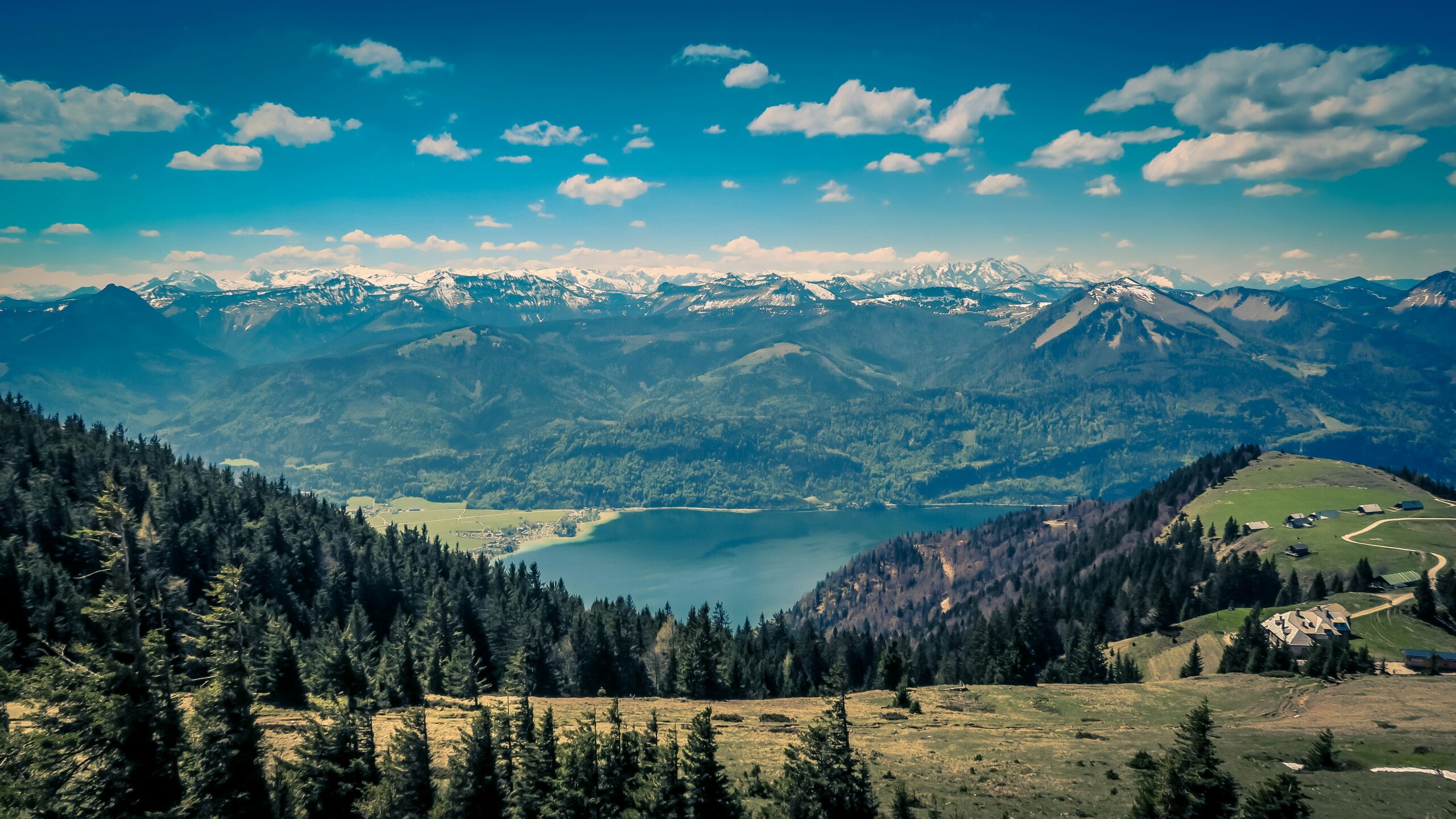
Length & Grade: This legendary 8/9 days trek earns its "Hard" classification honestly. You should be very fit before you leave home, as the route demands sustained effort across technical terrain that challenges even experienced mountain hikers.
Challenges & Safety: The route includes many sections with a cable as a hand rail, requiring absolute confidence with exposure and a head for heights. These aren't casual scrambles—they're serious alpine passages where a mistake could have severe consequences. Mental preparation is as important as physical fitness for safely completing this trek.
Highlights: The route's crown jewel is the spectacular 3,000m pass at Schönbichler Scharte, with an optional diversion to Schönbichler Horn at 3,134m for those seeking Austria's ultimate high-altitude hiking experience. The many atmospheric huts along the route create unforgettable overnight experiences, with the Berliner Hut standing out as perhaps the most atmospheric of all—perched dramatically above glaciated valleys with panoramic views that will leave you speechless.
Logistics: The adventure begins in Mayrhofen, which is easily accessible from Innsbruck or Munich by public transport, making international travel surprisingly straightforward. This accessibility means you can fly into major European hubs and reach the trailhead the same day, maximizing your precious vacation time in the mountains. Many hikers discover that advance flights to Austria booking provides better rates and more flexible scheduling for extended mountain adventures.
Mapping: The entire route is covered by the excellent 1:50,000 map Zillertaler Alpen, providing the detailed topographic information essential for safe navigation in challenging alpine terrain.
Silvretta Hiking High Route
Length & Grade: At 4 days and rated "Medium," this route offers significantly less demanding hiking than the Zillertal High route while still delivering authentic Austrian alpine experiences. It's perfect for hikers seeking serious mountain adventure without extreme technical challenges.
Scenery: The Silvretta region provides plenty of fine trekking with views of high glaciated mountains contrasting beautifully with typical Austrian green valleys filled with contented cows wearing traditional bells. This combination of dramatic high-altitude landscapes and pastoral valley scenes captures the essence of Austrian mountain beauty.
Logistics: Both ends are accessible by public transport, with convenient connections from Ischgl to Bielerhohe, making this route exceptionally practical for international visitors relying on public transportation. The efficient transport network means that even budget flights to Austria can lead to premium mountain experiences without requiring expensive transfers or rental cars.
Mapping & Guides: The route is covered by both the 1:50,000 map Silvretta Verwallgruppe and the Kompass map Silvretta Verwallgruppe, giving you multiple cartographic options. The newer guide Trekking In The Silvretta and Ratikon Alps provides updated route information and expanded coverage of the region.
Detailed Daily Breakdown:
Day 1: Ischgl/Bielerhohe to Wiesbadner Hut
Begin with a leisurely 1/2 day walk of approximately 2.5 hours that offers wonderful views while allowing your body to adjust to the altitude and mountain rhythm. Options exist to take the hiking trail to avoid the access road, providing a more authentic wilderness experience from the very first steps. The sensational view of glaciers and high mountains from the hut terrace creates a perfect introduction to the route's spectacular scenery. (www.wiesbadener-huette.com)
Day 2: Wiesbadner Hut to Jamtal Hut
This represents the route's most substantial day with approximately 5/6 solid hours of walking via Rad Sattel and Getschnerscharte. The extremely worthwhile side trip to Hohes Rad involves low scrambling but rewards you with incredible views for just 1.5 hours return effort. Jamtal Hut itself is large, modern and very well appointed, even featuring showers—a luxury that feels incredible after a challenging mountain day. (www.jamtalhuette.at/english)
Day 3: Jamtal Hut to Heidelberger Hut
Enjoy a beautiful day's walk of perhaps 6 hours following route 302 via Kronenjoch. While not difficult by Austrian standards, the route crosses a small glacier section, though no special equipment is required for this particular crossing. The day combines steady climbing with dramatic high-altitude scenery and the satisfaction of crossing into new mountain territory. (https://www.heidelbergerhuette.at)
Day 4: Heidelberger Hut to Ischgl
Complete your adventure with an easy walk of some 3.5 hours down the valley, allowing time to reflect on your mountain experiences while gradually returning to civilization.
Mountaineering Opportunities: For those seeking additional challenges, mountain guides can be hired to climb some of the big peaks in the region such as Piz Buin from Wiesbadner Hut, adding serious alpine ascents to your trekking adventure.
Essential Gear for Your Austrian Hiking Trip
The beauty of Austrian mountain hut systems means you can enjoy extended treks with a surprisingly light pack—typically just 35 to 40 litres compared to the massive loads required for camping-based adventures. This weight savings transforms the entire hiking experience, allowing you to move faster, cover more ground, and actually enjoy the scenery rather than focusing solely on surviving under a crushing pack weight.
Footwear Foundation
Your feet are your most important tools in the mountains. Sturdy hiking boots remain essential for rocky Austrian terrain, whether you choose traditional leather boots for durability, lightweight options for speed, or Gore-Tex boots for wet conditions. High-quality hiking shoes work well for less technical routes, while serious mountaineering boots become necessary if you're attempting technical peaks or glacier approaches.
Don't forget that Austria offers more than hiking—you'll want sturdy shoes for exploring salt mines and walking through charming Alpine towns where style matters as much as function.
Weather Protection
Austrian mountain weather changes rapidly, making quality rain jackets and pants with Gore-Tex protection absolutely essential. You'll need reliable insulation including jackets, pants, and vests that pack small but provide serious warmth when conditions deteriorate. Base layers manage moisture during strenuous climbs, while warm hats and gloves protect extremities during cold morning starts and high-altitude sections.
For specialized excursions like ice caves or historic salt mines, pack warm clothes since underground temperatures remain around 8°C year-round regardless of surface conditions.
Navigation and Safety
Modern GPS devices and rescue beacons provide crucial safety margins in serious mountain terrain, while traditional compasses and map cases ensure you maintain navigation capability if electronics fail. Quality first aid kits, survival bags, and blister treatments can mean the difference between a minor inconvenience and a trip-ending emergency.
Don't underestimate the importance of safety whistles for emergency signaling and walking poles for stability on steep, rocky terrain that characterizes many Austrian routes.
Hydration and Comfort
Hydration bladders and water bottles keep you properly hydrated during long mountain days, while water treatment options provide flexibility for refilling from mountain streams when necessary.
Safety & Insurance: What You Need to Know
Here's something many hikers discover too late: mountain search and rescue in Austria and indeed in most of continental Europe is not a free service and can result in a sizeable bill that transforms a mountain emergency into a financial disaster.
Travel Insurance Reality Check
Check your travel insurance policy carefully to see if it will cover such eventualities, as many standard policies do not include mountain rescue coverage. This isn't a minor detail—helicopter evacuations in Alpine terrain can cost thousands of euros, and ground-based rescue operations involving professional teams also command significant fees.
Austrian Alpine Club: Your Safety Net
The single most important safety investment you can make is joining the Austrian Alpine Club for their worldwide mountain rescue insurance, which represents an absolute bargain considering the potential costs involved. Members also receive discounts at mountain huts, making the membership pay for itself quickly during any serious hiking trip.
English speakers should join the Austrian Alpine Club UK section, which provides the same benefits while offering English-language communication and support services.
This isn't optional insurance for serious mountain hikers—it's essential protection that allows you to focus on enjoying your adventure rather than worrying about financial catastrophe if something goes wrong. Smart planning includes securing this coverage before booking flights to Austria, ensuring comprehensive protection from the moment you begin traveling.
Beyond the Trails: Exploring Austria's Alpine Culture & Towns
Austria's magic extends far beyond its hiking trails into charming towns and cultural attractions that add depth and richness to any mountain adventure. These destinations showcase the country's unique blend of natural beauty and human creativity that has evolved over centuries of Alpine life. Many visitors plan their Austria holidays specifically to combine serious hiking with these incredible cultural experiences, creating truly memorable trips that satisfy both adventure and cultural curiosity.
Hallstatt: A Fairytale Village & Its Wonders
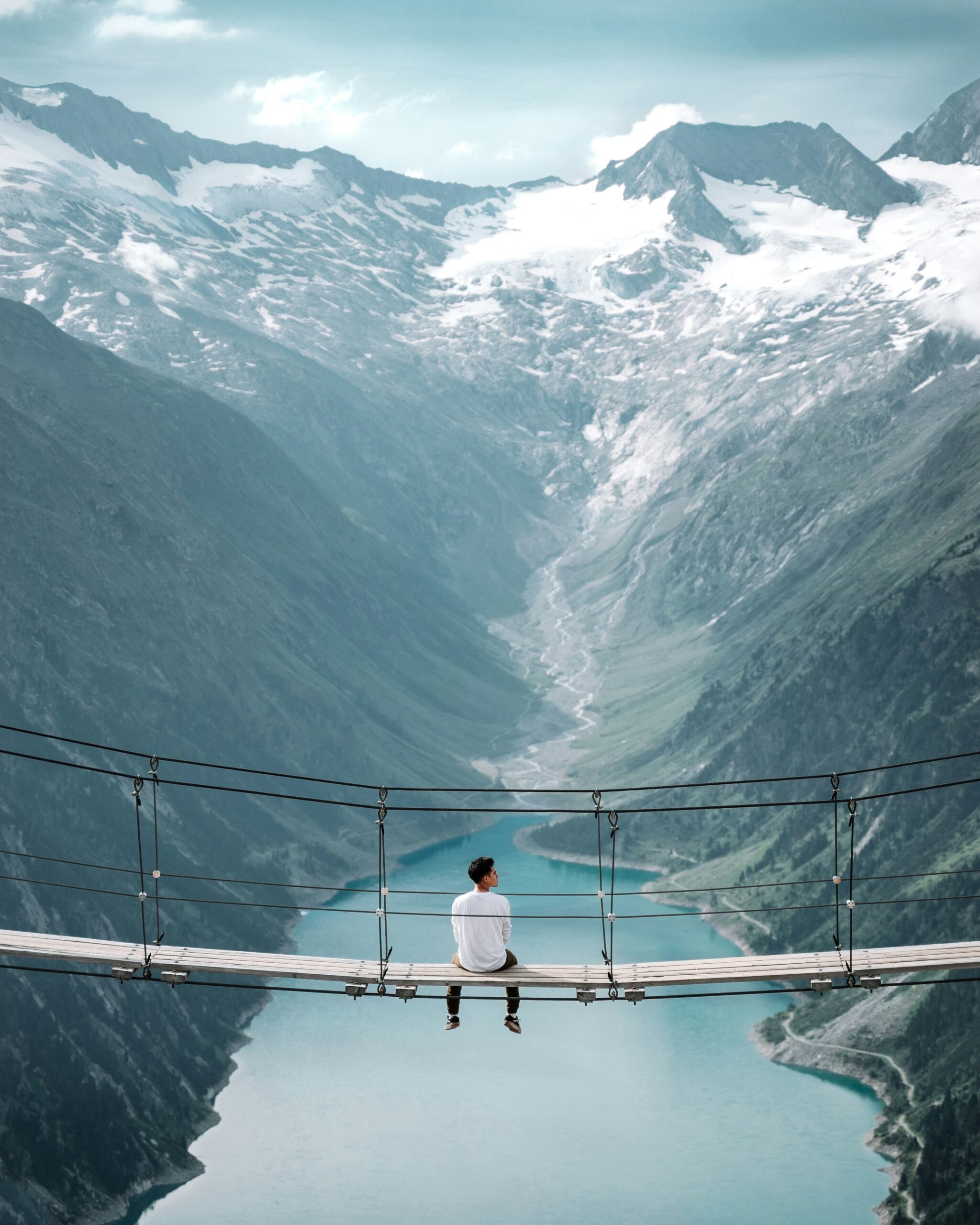
Hallstatt stands as painfully photogenic evidence of Austria's incredible beauty, widely considered the prettiest village in Austria. Its iconic postcard view has achieved UNESCO World Heritage status, while the village itself sits above the oldest salt mine in the world, creating a unique combination of natural beauty and human history.
Hallstatt Skywalk & Iconic Lake View
The "Welterbeblick" (World Heritage View) consists of a 40-meter-long steel platform that juts out over a 360-meter cliff, providing an unmatched panoramic view of Hallstatt, the lake, and the surrounding Dachstein mountains. Access via the historic Salzbergbahn funicular adds to the experience, combining scenic transportation with breathtaking destination views.
Salzwelten, Hallstatt's Salt Mines
This attraction brings 7,000 years of history to life through interactive experiences including the oldest wooden staircase in the world (3,000 years old), thrilling underground slides, and an atmospheric train ride inside the caves. Tours last 90 minutes in constant 8°C temperatures, so bring warm clothes regardless of surface weather. Note the important closure for renovation from September 2025—plan accordingly.
Hallstatt Ossuary (Beinhaus)
Perhaps Hallstatt's eeriest attraction, this small building houses over 1,200 human skulls, about 600 of them hand-painted with names, symbols, and floral designs in St. Michael's Chapel. This unique tradition reflects local burial practices necessitated by limited cemetery space, creating a haunting but beautiful memorial to community history.
World Heritage Museum Hallstatt & Hidden Excavations
The museum showcases artifacts and geological facts that explain Hallstatt's incredible history and significance. Don't miss the freely accessible excavation site located beneath a sports equipment store, where ongoing archaeological work continues to reveal new insights into this ancient community.
Other Hallstatt Highlights
The Evangelical Church and Market Square provide perfect photography opportunities, while small shops offer salt-based souvenirs unique to this historic mining community. The lakefront path offers peaceful walks with incredible reflections, and lake ferry rides or boat rentals add water-based perspectives to your Hallstatt exploration.
Dachstein Ice Caves & 5 Fingers
Just across the lake in Obertraun, nestled in the Krippenstein mountains, you'll discover some of Austria's most spectacular underground attractions alongside heart-stopping viewing platforms.
The Cave System
Three main caves offer different underground experiences: Mammut cave showcases impressive limestone formations, Koppenbrüller cave features an underground river system, and the Giant Ice Cave displays incredible frozen formations that remain stable year-round due to unique airflow patterns.
5 Fingers Viewing Platform
This engineering marvel consists of five separate metal walkways ("fingers") jutting out over a 400-meter drop near Krippenstein mountain, offering arguably the best view in the area. Each finger provides a different perspective and experience, from gentle viewing to heart-pounding exposure. The nearby "Welterbespirale" spiral platform adds another dimension to the high-altitude viewing experience.
Other Nearby Gems
Gosausee
This glacier-fed lake attracts way fewer people than famous Hallstatt while providing equally stunning scenery. Easy hiking trails or more challenging via ferrata routes suit different adventure levels, while a pretty waterfall adds photographic interest to this peaceful alpine setting.
Bad Ischl
Once Emperor Franz Joseph's former spa retreat, this elegant town showcases imperial Austrian culture through magnificent architecture, historic cafes, and well-maintained parks that reflect centuries of royal patronage and sophisticated Alpine living.
Altaussee
This peaceful lake village offers an authentic Austrian mountain town experience complete with traditional hiking trails and family-run guesthouses where you can experience genuine local hospitality away from major tourist crowds.
Useful Resources for Planning Your Trip
Essential Websites
The Austrian Alpine Club website provides comprehensive information in German, but Google translates it effectively. The site lists all mountain huts with direct links, current conditions, and booking information essential for planning multi-day treks.
Summit Post functions like a Wikipedia for mountains, offering detailed route descriptions, current conditions, and user-generated content for peaks like Piz Buin and other Austrian objectives.
Official tourist sites for Zillertal Alps, Stubai Valley, and Hohe Tauern National Park provide current information on trail conditions, weather, and local events that might affect your hiking plans.
Don't overlook public transport resources for bus and train schedules, which are remarkably reliable and comprehensive throughout Austria's mountain regions.
Maps and Navigation
The 1:50,000 map Zillertaler Alpen and 1:50,000 map Silvretta Verwallgruppe provide essential topographic detail for safe navigation in Austria's premier hiking regions. These Austrian maps maintain excellent accuracy and clarity standards essential for mountain travel.
Related Reading
Explore additional resources on hut-to-hut walking techniques, European mountain hut systems, and other Alpine destinations including Norwegian fjord hikes, broader European Alps adventures, and specific Austrian peak objectives like the impressive Grossglockner at 3,798 meters.
Frequently Asked Questions
When is the best time to hike in Austria?
The optimal hiking season runs from June through September, with July and August offering the most stable weather and full hut operations. Early season hiking (June) provides incredible wildflower displays, while late season (September) offers fewer crowds and beautiful autumn colors. Many travelers find the best deals on flights to Austria during shoulder seasons, making spring and fall excellent times for budget-conscious adventurers.
Do I need to speak German to hike in Austria?
While German helps, most mountain hut staff speak basic English, and the hiking community is very international. Trail markings use universal symbols, and most guidebooks provide essential German phrases for mountain travel.
How difficult is booking mountain huts?
Popular huts require advance reservations, especially during peak summer months. Most huts accept online bookings, and the Austrian Alpine Club membership provides booking advantages and discounts.
What's the typical cost for a mountain hut stay?
Expect to pay 25-40 euros per night for dormitory accommodation, with meals costing 10-20 euros each. Austrian Alpine Club membership provides significant discounts that quickly offset the membership fee. When planning Austria holidays, budget-conscious travelers often find that hut-based hiking offers excellent value compared to hotel-based mountain tourism.
Can beginners attempt these routes?
The Silvretta High Route suits confident beginners with good fitness, while the Zillertal High Route demands significant mountain experience. Start with day hikes or shorter multi-day routes to build skills and assess your capabilities.
What happens if weather forces route changes?
Austrian mountain huts provide excellent refuge during bad weather, and most routes offer escape options to nearby valleys. Flexible itineraries and travel insurance help manage weather-related complications.
How reliable is the trail marking system?
Austrian trail marking follows consistent national standards with excellent maintenance by the Alpine Club. Red-white-red blazes mark standard hiking routes, while additional colors indicate different route types and difficulty levels.
Your Austrian Hiking Adventure Awaits!
Austria offers something truly magical for mountain lovers: a perfect combination of dramatic alpine beauty, practical logistics, and genuine cultural warmth that transforms hiking from mere exercise into profound personal adventure. The country's unique approach to mountain hospitality—through its incredible hut system, well-maintained trails, and deep-rooted culture of welcoming mountain visitors—creates hiking experiences that remain with you long after you've returned home.
Whether you're drawn to the technical challenges of the Zillertal High Route, the scenic variety of the Silvretta trek, or the cultural richness of combining hiking with exploring fairytale villages like Hallstatt, Austria provides the perfect foundation for your European mountain dreams. Smart travelers often discover that booking early flights to Austria and planning comprehensive Austria holidays allows them to experience multiple regions and create truly transformative mountain adventures.
The comprehensive infrastructure means you can focus on what matters most: breathing crisp alpine air, sharing stories with fellow hikers from around the world, and creating memories that will inspire future adventures. From the moment you book those flights to Austria until you're sharing photos with friends back home, every aspect of your Austrian hiking adventure reflects the country's commitment to making mountain travel both accessible and authentic.
Your Austrian Alps adventure awaits. Start planning today, choose your route, research your gear, and prepare for mountain experiences that will redefine your understanding of what hiking can be. With competitive flights to Austria available year-round and endless possibilities for customizing your Austria holidays, the trails, huts, and warm Austrian hospitality are ready—the only question is when you'll answer their call.

